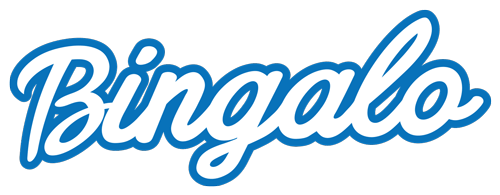
When selling pre-owned items online or locally, pricing them correctly can be the difference between a quick sale and a listing that lingers for months without interest. Striking the right balance between a fair price and maximizing your earnings requires strategy, research, and an understanding of market trends. If you’re ready to turn your clutter into cash, here’s a comprehensive guide to pricing your used items effectively for fast sales.
1. Understand the Market Value
The first step to pricing your items is researching their current market value. Start by checking similar items on popular resale platforms like eBay, Facebook Marketplace, or local classifieds. Look for items in comparable condition and note how much they sold for (not just the asking price).
For example, if you’re selling a used smartphone, search for the same model with similar wear and accessories. Knowing the typical selling price gives you a baseline to work from and ensures you don’t price yourself out of the market.
Tips for Researching Market Prices:
- Use filters to narrow down items by condition (new, like-new, used).
- Look for completed sales on platforms that display historical pricing.
- Check local marketplaces in your area, as regional demand can affect pricing.
2. Consider Condition and Age
The condition of your item is one of the biggest factors affecting its price. Be honest about wear and tear, missing parts, or cosmetic flaws. Items in excellent condition can fetch 60% to 80% of their original retail price, while heavily worn items may only be worth 20% to 40%.
Create a clear description that accurately reflects the condition:
- New/Like New: Minimal signs of use, often with original packaging.
- Gently Used: Light wear, fully functional with no major flaws.
- Well-Worn: Noticeable wear or minor damage but still functional.
Age also matters—newer items, especially technology, generally hold more value than older versions. Electronics like laptops and smartphones depreciate faster than furniture or home goods, so adjust accordingly.
3. Offer Competitive Pricing
If you want to sell quickly, your price needs to be competitive. Aim to price slightly below market value, especially if your goal is a fast transaction. For instance, if most used bicycles of a certain type sell for $150, pricing yours at $140 may attract more buyers without drastically cutting into your earnings.
Avoid pricing too low unless you’re in a rush to clear space. Extremely low prices can raise red flags for potential buyers, making them question the item’s legitimacy or condition.
Use Price Anchoring
Highlight the original retail price in your listing to create a sense of value. For example:
“Originally purchased for $200, selling for $90.”
This tactic helps potential buyers feel they’re getting a bargain.
4. Factor in Demand
Some items sell faster than others. High-demand products like smartphones, brand-name apparel, and children’s toys can command higher prices, while niche or outdated items may require lower pricing to move quickly.
When pricing, consider:
- Seasonal Demand: Winter coats sell better in colder months; summer sports equipment moves faster in spring and summer.
- Trends: Popular brands or trendy items may sell for more than generic alternatives.
If you’re selling furniture or home décor in Bet Shemesh, for example, demand may be influenced by local needs and cultural preferences. Pay attention to local marketplace activity to understand what’s popular.
5. Bundle Items for Value
If you have multiple items that complement each other, consider bundling them into a package deal to increase perceived value and sell faster. For example:
- Clothing Lots: Group related clothing items (e.g., a children’s winter gear bundle).
- Tech Accessories: Sell a phone with a charger, case, and screen protector together.
When bundling, offer a slight discount compared to selling each item individually. For example, if each piece would sell for $30 separately, pricing the bundle at $80 may entice buyers to purchase all at once.
6. Include a Negotiation Buffer
Many buyers expect to negotiate, so build a small cushion into your initial price. For example, if you want to get $50 for an item, list it at $55 or $60. This allows room for negotiation while still meeting your pricing goal.
However, avoid inflating the price too much, as this can deter interest. A reasonable buffer (5% to 15%) strikes the right balance.
7. Be Transparent About Costs
If you’re selling items online and shipping is required, be clear about who will cover shipping costs. Offering free shipping often attracts more buyers, but you’ll need to adjust your price to absorb that expense.
For local sales, factor in the convenience of meeting locations. Offering delivery or meeting halfway can justify a slightly higher price but should be mentioned upfront.
8. Adjust Prices Based on Interest
If your item hasn’t sold after a few weeks, it’s time to reassess. A lack of interest often indicates the price is too high. Consider dropping the price incrementally until you start receiving inquiries.
Tip for Price Drops:
- Lower the price by 10% to 15% and update your listing with a note: “Price reduced for quick sale!”
This refreshes the listing and may attract new buyers.
9. Highlight Value in Your Description
A compelling description can justify your price. Mention any unique features, warranties, or additional accessories that add value. For example:
- “Lightly used Canon camera with original box, extra lens, and carrying case included.”
- “Premium leather couch in excellent condition. Originally purchased for $1,500—selling for $600.”
Detailed descriptions, high-quality photos, and clear pricing show professionalism and increase trust, making buyers more willing to pay your asking price.
10. Be Willing to Walk Away
While quick sales are the goal, don’t feel pressured to accept an offer that’s significantly lower than your item’s worth. If negotiations aren’t fruitful, be polite but firm. You can always relist the item or try a different marketplace.
Conclusion
Pricing used items for quick sales requires a balance of research, transparency, and strategy. By understanding market trends, accurately assessing your item’s condition, and offering competitive yet fair prices, you’ll increase your chances of making fast, successful sales. Remember, a well-priced item with a clear description and good photos attracts serious buyers—helping you turn your unwanted items into cash quickly and efficiently. Happy selling!

